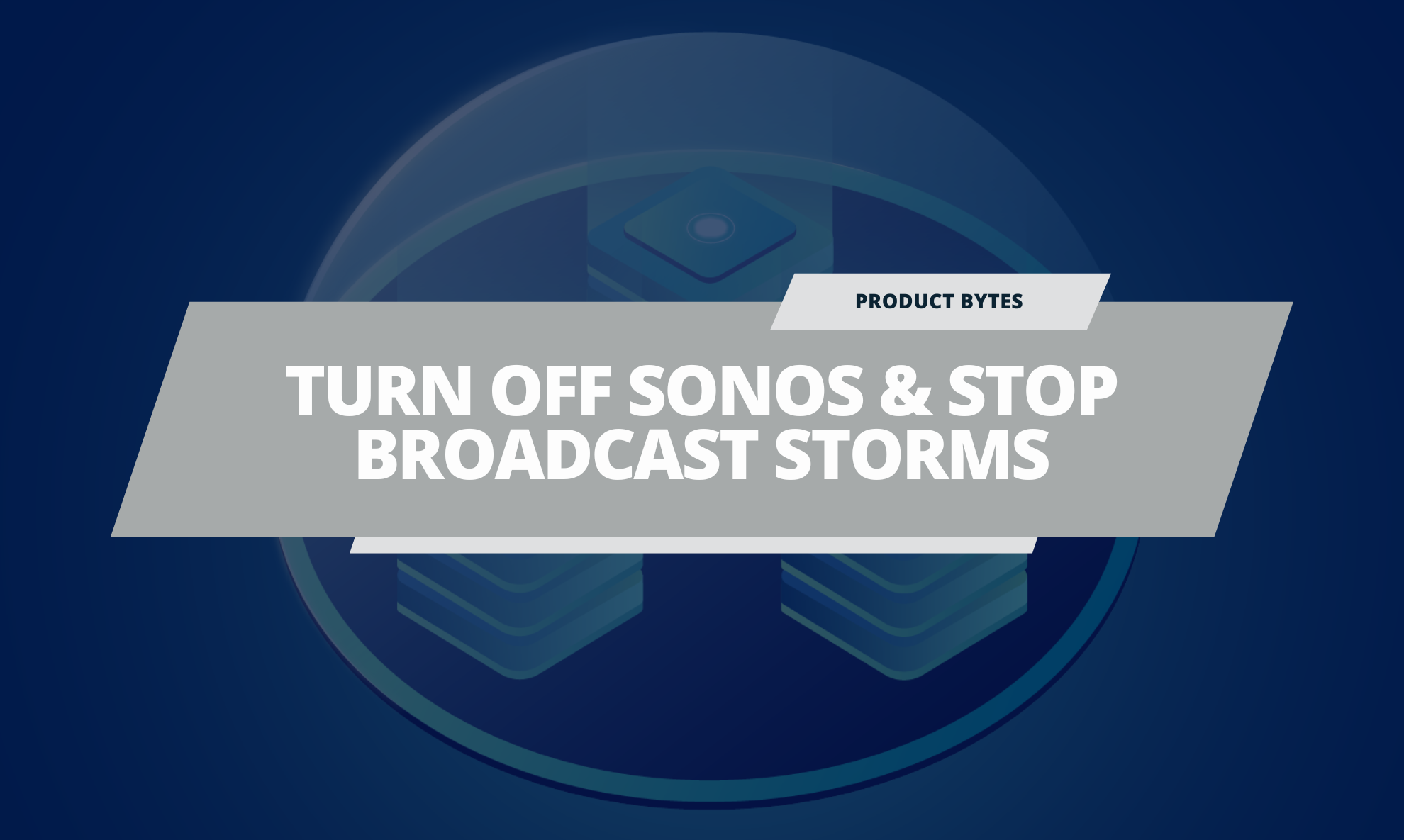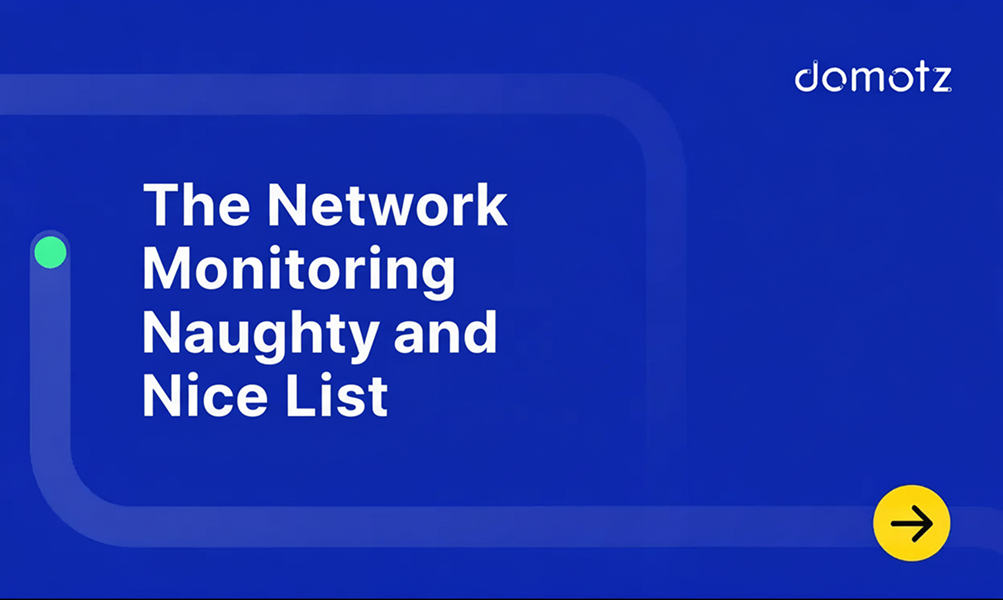Domotz network monitoring and remote management software embedded in products like a Luxul router can be used to turn off Wi-Fi for Sonos devices when wireless isn’t needed, resulting in a cleaner and more secure home network.
First rule of Wi-Fi: Shut off the wireless if you don’t need it. Unnecessary traffic can undermine a network and introduce potential vulnerabilities that wouldn’t exist if you just disabled Wi-Fi.
So why won’t Sonos let you JUST DISABLE Wi-Fi?
“It’s a pretty big issue with the integration community,” says Michael Grubb, newly appointed VP of marketing for Luxul, a developer of high-performance networking gear for the professional A/V integration channel.
Many users hardwire their Sonos Connect players to the home network for the best possible performance. Even then, “Sonos doesn’t offer the ability to turn off Wi-Fi,” Grubb says.
The result is an entirely unnecessary “broadcast storm” caused by all those confused Sonos devices trying to connect with each other via the proprietary SonosNet wireless mesh, while already chatting happily over hardwired Ethernet. The dueling networks can create an endless broadcast loop that takes down the whole network.
Grubb knows this scenario all too well, having spent four years at Sonos as a regional sales rep before joining Luxul this year.
An option to disable Wi-Fi was “probably one of the top five requests we got from dealers,” he says, noting that open APIs and channel conflicts were up there.
The Sonos Wireless Fix
Now there’s a simple fix for the Sonos Wi-Fi issue, thanks to software from Domotz, provider of network monitoring and diagnostic software, and parent company of the popular Wi-Fi-sniffer Fing.
Luxul is deploying Domotz in its Luxul Epic 3 Router. Simply open the Domotz app, pull up the Sonos devices and hit the Wi-Fi toggle button. Domotz provides the wireless status of the Sonos devices.
The ability to silence wireless communications has some pretty sweet implications if you consider all the networking devices in a typical home that come out of the box with Wi-Fi blazing.
Domotz has several such tricks in its software suite, often accomplished through reverse-engineering. This hand feature, however, entailed a little bit of luck, according to Grubb: “We just kind of stumbled across it.”
That’s what happens when you monitor the volume of network traffic that Domotz does (with a boost from Fing).
The timing couldn’t be better, as countless wireless devices invade the home, packed with auto-discovery and other potentially invasive features that, by default, never rest.
The ability to silence wireless communications has some pretty sweet implications if you consider all the networking devices in a typical home that come out of the box with Wi-Fi blazing — printers, TVs, major appliances, and even smart-home devices like Nest thermostats that eventually will take advantage of local communications technologies (Thread/Weave in this case).
Domotz potentially could be programmed to disable Wi-Fi after the IoT devices do their online business, and perhaps reconnect every so often as necessary.
Shunting that extra RF traffic, even temporarily, can improve security and provide an all-around “stable, controllable environment,” Grubb says.
No, Domotz isn’t the Only Solution
There are other workarounds for this (potential) broadcast loop. You can kill the wireless chatter by opening the Sonos port on the Wi-Fi network if you can find it, and then issue a direct command-line code from a Web browser, but … meh.
Also, a managed switch with Spanning Tree Protocol (STP) running should do the trick. Luxul ships its managed switches with STP enabled by default, making a wireless Sonos installation plug-and-play, according to Grubb.
In the absence of a managed switch, the Domotz software will soothe some headaches.
Grubb concedes nobody knows how future Sonos updates might affect this handy fix, but Domotz is committed to fixing the fix if Sonos unfixes it.
Domotz and Legrand are exhibiting at CES. Register for the Ultimate CES 2018 Preview Webinar.
More Luxul News
Luxul, a division of Legrand, has said over the past couple of years that it wants to be the network infrastructure for add-on services like Domotz. Several leading competitors in the CE channel, including Pakedge (with BakPak) and SnapAV’s Araknis (OvrC), have their own network-monitoring and remote management tools.
Grubb reiterates this mission, saying the company will incorporate other solutions from different providers as well. Luxul started this initiative last year, incorporating Router Limits parental controls and network-monitoring to its routers.
Grubb says Luxul plans a “reinvigoration” of the company’s XWC wireless controller campaign, promoting that scheme – with proprietary Roam Assist technology – as the go-to architecture for most custom-oriented networks.
Meanwhile, Luxul is working with Domotz (and others) to add networking smarts to other products in the Legrand family, which includes NuVo Technologies (multiroom audio), OnQ (home-control, communications, structured wiring) and Middle Atlantic (A/V racks, power management), Vantage (home automation, lighting controls), QMotion (motorized shades), and WattStopper (lighting controls).
First up will be an line of intelligent power-distribution products from Middle Atlantic to be released in the next couple of months.
Legrand recently launched its Eliot program to develop an interoperable IoT ecosystem based on the Samsung Artik Cloud platform. In the past, the company has demonstrated solutions incorporating Artik and IBM’s Watson AI technology.
About The Author
Julie Jacobson, recipient of the 2014 CEA TechHome Leadership Award, is co-founder of EH Publishing, producer of CE Pro, Electronic House, Commercial Integrator, Security Sales and other leading technology publications. She currently spends most of her time writing for CE Pro in the areas of home automation, security, networked A/V and the business of home systems integration. Julie majored in Economics at the University of Michigan, spent a year abroad at Cambridge University, earned an MBA from the University of Texas at Austin, and has never taken a journalism class in her life. She’s a washed-up Ultimate Frisbee player currently residing in Carlsbad, Calif. Email Julie at jjacobson@ehpub.com



